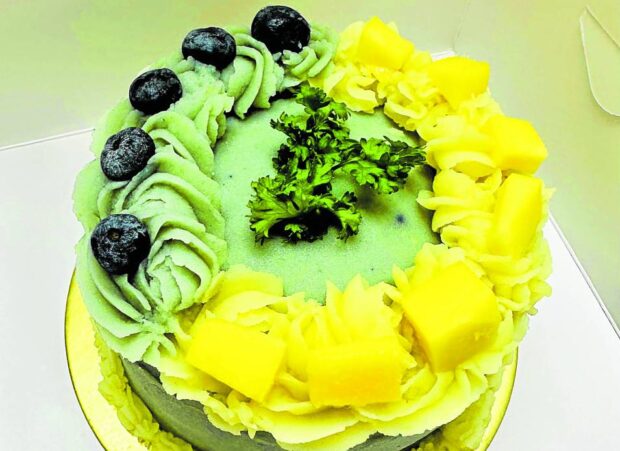Most humans know not to give dogs food they shouldn’t have, like chocolates, grapes and onions. But not everyone would go to the lengths Ember Silva has in feeding her beloved pooches.
Growing up in the Philippines, Silva cared for up to a dozen mongrels at a time. She ensured their vaccinations were complete, bathed them weekly, and fed them homemade meals. “Di pa uso ang kibbles (dry dog food) noon,” said Silva. She cooked the meat “sawdust” bought from supermarkets and got them Jollibee or McDonald’s meals on birthdays.
After getting married, she moved to Singapore with her husband and had a child. But her fondness for dogs remained.
“My dog Kimmy lived for 11 years. She was on mixed feeding: kibbles, home-cooked minced mutton with veggies and herbs, and her daily snack of fresh apples (cut into bite-size pieces without the seeds). We also gave her an omega-3 supplement and occasional dog treats,” she said.
Though Kimmy was food motivated, Silva said she was hard to feed—not because she was fussy, but because she had chronic skin allergies from ingredients like chicken. Every few months, they had to change her kibbles as she would develop allergic reactions.
With her new Schnauzer Mikky, Silva became more careful with feeding. She took cooking classes for dogs to learn about nutrition and preparing homemade meals for dogs. Silva also learned about all-natural cooking and herbal treatment for dogs, which promoted the use of nontoxic products and vegetarianism for dogs.
More recently, she took up baking birthday cakes and mooncakes for dogs. She learned how to make a meat-based cake (pork/beef with sweet potato bits; frosting is mashed potatoes with butterfly pea powder topped with fresh blueberries, mangoes and parsley) and mooncakes (purple sweet potato with mashed potato, blueberry and pet cheese filling; orange sweet potato with mashed potato, cherry tomato and turmeric powder filling). She also attends talks on canine health issues such as cancer.
Be more creative and experimental
Based on all she’s learned, what should dogs be eating? “From The Pet Cancer Forum I attended at the Camden Medical Center in Singapore, the preferred diet plan for dogs is: a balanced raw homemade diet, a balanced cooked homemade diet, a commercial balanced raw diet, a dehydrated/freeze-dried raw diet, commercial cooked/refrigerated food, or human-grade canned food. Note that kibbles are not included in the list,” said Silva.
She admitted that Mikky still takes kibbles but eats home-cooked meals 90 percent of the time. “I don’t feed him the same food every day. I rotate to have more variety. Fortunately, he has no allergies and can eat almost anything. I just observe what foods he tends to react to by vomiting, so we avoid those.”
Silva learned how to be more creative and experimental in preparing Mikky’s meals by baking, sous vide cooking, dehydrating and making homemade treats like dehydrated apples, bark bone treats and meatloaf.
“Some feed their dogs a Barf (Biologically Appropriate Raw Foods) diet, others choose to provide high-quality organic kibbles, and some do mixed feeding like me. In giving home-cooked meals, just make sure that it is fresh, with no condiments like salt. Use fresh or dried herbs (check which the dog cannot take), and if feeding fish like salmon, it must be well-cooked and free of small bones,” advised Silva.

She also learned to follow a ratio of 70:20:10 or 80:10:10 protein (chicken breast, beef, pork, duck, turkey, salmon, cod fish), vegetables (carrots, leafy greens, etc.) and organ meat (liver, kidneys). Be mindful of your dog’s percentage of weight versus the allowed daily feeding. “For Mikky (a 7-kilograms adult dog), I feed him twice a day. He is allowed less than 100 grams a day (50 g/meal). A food calculator is available online for free. Everything can now be looked up online. Just make sure what you are following is from reliable sources,” said Silva.
For longevity, Silva’s herbal teacher encourages feeding dogs just plain vegetables with lots of herbs. “Personally, I think cooking for dogs should be fun for both the human and the dog.”
Silva shared some dog-friendly recipes.
Mikky Pawncakes
150 g rice or brown rice flour (or any gluten-free flour)
1 egg (or 1/4 c apple purée)
1/4 tsp baking powder
50 g mashed ripe banana or mashed cooked squash/pumpkinOptional: 1 tbsp to add, choose or combine:
Goji berry powder
Peanut butter powder (xylitol-free)
Carob powder
1 tsp extra virgin coconut oil
Mix them all together and cook like normal pancakes. Yield: 10 2 inch pancakes. Tip: Silva feeds her dog 1 pc per day for his morning meal.
Mikballs
1/4 kg fresh minced lean meat of your choice (I used minced pork.)
1 egg
1 tbsp fresh organ meat cut into small pieces (I used pork liver.)
A handful of fresh malunggay leaves (without stems)
Dried herbs-spices mix of your choice (parsley, turmeric powder, oregano, kelp powder), just a sprinkle
Brown rice flour (to help bind the mixture if still too wet)
Combine all together and form into 1 in size balls. Steam or bake until light brown. Lightly pan-fry in coconut oil before serving/storing. Yield: 30 meatballs. Tip: Feed 4-5 pc/meal depending on the dog’s feeding requirement.
Chicken Tinola
2 pc chicken breast (skinless with bone)
1-2 cups water
2 fresh ginger cut into strips
Handful of malunggay leaves
Boil until chicken is tender. Add malunggay leaves. Cool before serving. Cut the chicken into strips, and remove the bones. Feed with the broth, including the ginger strips (anti-inflammatory). Yield: 2-3 servings, depending on size of dog. —CONTRIBUTED INQ

